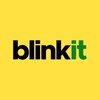
i
HealthifyMe
Filter interviews by
HealthifyMe Dietician Interview Questions and Answers
HealthifyMe Dietician Interview Experiences
3 interviews found
(2 Questions)
- Q1. Seed cycling explanation in detail
- Q2. Diabetes management through diet
Interview Preparation Tips
I applied via LinkedIn and was interviewed in Sep 2022. There were 3 interview rounds.

(2 Questions)
- Q1. First question was regarding the educational details
- Q2. Another one was related to past experience in the same indsutry
(3 Questions)
- Q1. Types of diet plan for weight loss
- Q2. What are the different approach for diet planning
- Q3. Are you comfortable in doing sales
Interview Preparation Tips
I applied via Referral and was interviewed in Sep 2022. There were 3 interview rounds.

(3 Questions)
- Q1. What is your educational details
- Q2. What is your past experience in this field
- Q3. Do you have wifi and laptop at your home
- Ans.
Yes, I have wifi and a laptop at my home.
I have a wifi connection at my home.
I own a laptop that I use for work and personal use.
Having wifi and a laptop allows me to stay connected and access online resources easily.
I can use my laptop to research and stay updated on the latest developments in the field of nutrition and dietetics.
(2 Questions)
- Q1. What are the types of diet plan
- Ans.
There are various types of diet plans such as low-carb, low-fat, Mediterranean, vegetarian, vegan, and intermittent fasting.
Low-carb diet plan involves reducing the intake of carbohydrates and increasing protein and fat intake.
Low-fat diet plan involves reducing the intake of fat and increasing the intake of carbohydrates and protein.
Mediterranean diet plan involves consuming fruits, vegetables, whole grains, fish, and...
- Q2. Diet approach for weight loss
Interview Preparation Tips
- Diet Counselling
- Sales
Top trending discussions






Interview questions from similar companies

Interview Questionnaire
1 Question
- Q1. Introduction

I applied via Referral and was interviewed in May 2021. There were 4 interview rounds.
Interview Questionnaire
2 Questions
- Q1. There were 5 rounds in total. First-round was written. They asked fashion-related questions like sleeve types, prints, grammar correction, and paragraph-writing on one of the related topics. The second rou...
- Q2. What are contractor benefits at Myntra? Do they get employee discount code?
- Ans.
Contractors at Myntra receive certain benefits, including an employee discount code.
Contractors at Myntra receive certain benefits, such as access to the company's employee discount code.
The employee discount code allows contractors to purchase Myntra products at a discounted rate.
Other benefits for contractors may include flexible work hours and the opportunity to work on exciting projects.
However, the specific benefi...
Interview Preparation Tips

I applied via LinkedIn and was interviewed in Apr 2024. There was 1 interview round.
(2 Questions)
- Q1. About yourself, S&W
- Q2. Impact PORs Impact Impact

I applied via Approached by Company and was interviewed before Nov 2023. There was 1 interview round.
One backend Assignment

I applied via Approached by Company and was interviewed in Jun 2024. There was 1 interview round.
(4 Questions)
- Q1. How would you rate your proficiency in data analysis?
- Ans.
I rate my proficiency in data analysis as advanced.
Proficient in using statistical software such as R and Python for data analysis
Experienced in cleaning and organizing large datasets
Skilled in creating data visualizations to communicate insights
Have successfully completed data analysis projects during my academic studies
- Q2. Can you provide an example of how you have utilized Excel to enhance a process or improve efficiency?
- Ans.
Yes, I used Excel to automate data entry and analysis for a research project.
Created macros in Excel to automatically import and organize data from multiple sources
Used pivot tables and charts to analyze and visualize data trends
Implemented conditional formatting to quickly identify outliers and discrepancies
Saved time by setting up formulas for calculations and generating reports
- Q3. What is the average number of flights that take off daily from Delhi Airport?
- Ans.
The average number of flights that take off daily from Delhi Airport is approximately 1,300.
Approximately 1,300 flights take off daily from Delhi Airport.
The number of flights can vary depending on the day of the week and time of year.
Delhi Airport is one of the busiest airports in India, serving both domestic and international flights.
- Q4. What is the average monthly consumption of tea in Mumbai?
- Ans.
The average monthly consumption of tea in Mumbai is approximately 3-4 kg per person.
The average monthly consumption of tea in Mumbai varies depending on individual preferences and habits.
Tea is a popular beverage in Mumbai, with many people consuming multiple cups a day.
Factors such as age, gender, and socio-economic status can also influence tea consumption in Mumbai.

I applied via Naukri.com and was interviewed in Sep 2023. There were 2 interview rounds.
(3 Questions)
- Q1. My qualifications
- Q2. Eligibility capability
- Q3. Can I do it
(2 Questions)
- Q1. Fresher should do it
- Q2. Will I be able to cope up
Interview Preparation Tips

I appeared for an interview in May 2025, where I was asked the following questions.
- Q1. What was the most difficult challenge you faced, and how did you overcome it?
- Ans.
I faced a significant challenge during a group project where team dynamics were poor, but I facilitated communication to overcome it.
Identified communication breakdowns within the team.
Organized a meeting to address concerns and set clear roles.
Encouraged open dialogue to foster collaboration.
Implemented regular check-ins to monitor progress and morale.
Resulted in a successful project completion and improved team cohes...
- Q2. What strategies can be implemented to achieve organic reach?
- Ans.
Implementing effective strategies can significantly enhance organic reach on social media and digital platforms.
Create high-quality, engaging content that resonates with your audience. For example, infographics or how-to videos.
Utilize SEO techniques to optimize content for search engines, such as using relevant keywords and meta tags.
Leverage social media platforms by posting consistently and engaging with followers t...
HealthifyMe Interview FAQs
Tell us how to improve this page.
HealthifyMe Interviews By Designations
- HealthifyMe Nutritionist Interview Questions
- HealthifyMe Consultant Nutritionist Interview Questions
- HealthifyMe Dietician Interview Questions
- HealthifyMe Fitness Coach Interview Questions
- HealthifyMe Consultant Interview Questions
- HealthifyMe Production Analyst Interview Questions
- HealthifyMe Inside Sales Executive Interview Questions
- HealthifyMe Senior Associate Interview Questions
- Show more
Overall Interview Experience Rating
based on 4 interview experiences
Difficulty level
Duration
Interview Questions from Similar Companies
HealthifyMe Dietician Reviews and Ratings
based on 16 reviews
Rating in categories
|
Consultant Nutritionist
155
salaries
| ₹2.5 L/yr - ₹6 L/yr |
|
Nutritionist
154
salaries
| ₹2.4 L/yr - ₹6 L/yr |
|
Senior Nutritionist
76
salaries
| ₹3 L/yr - ₹7 L/yr |
|
Fitness Consultant
46
salaries
| ₹2.9 L/yr - ₹6.2 L/yr |
|
Dietician
43
salaries
| ₹3 L/yr - ₹5.5 L/yr |

Udaan

Swiggy

Oyo Rooms

Blinkit
- Home >
- Interviews >
- HealthifyMe Interview Questions










